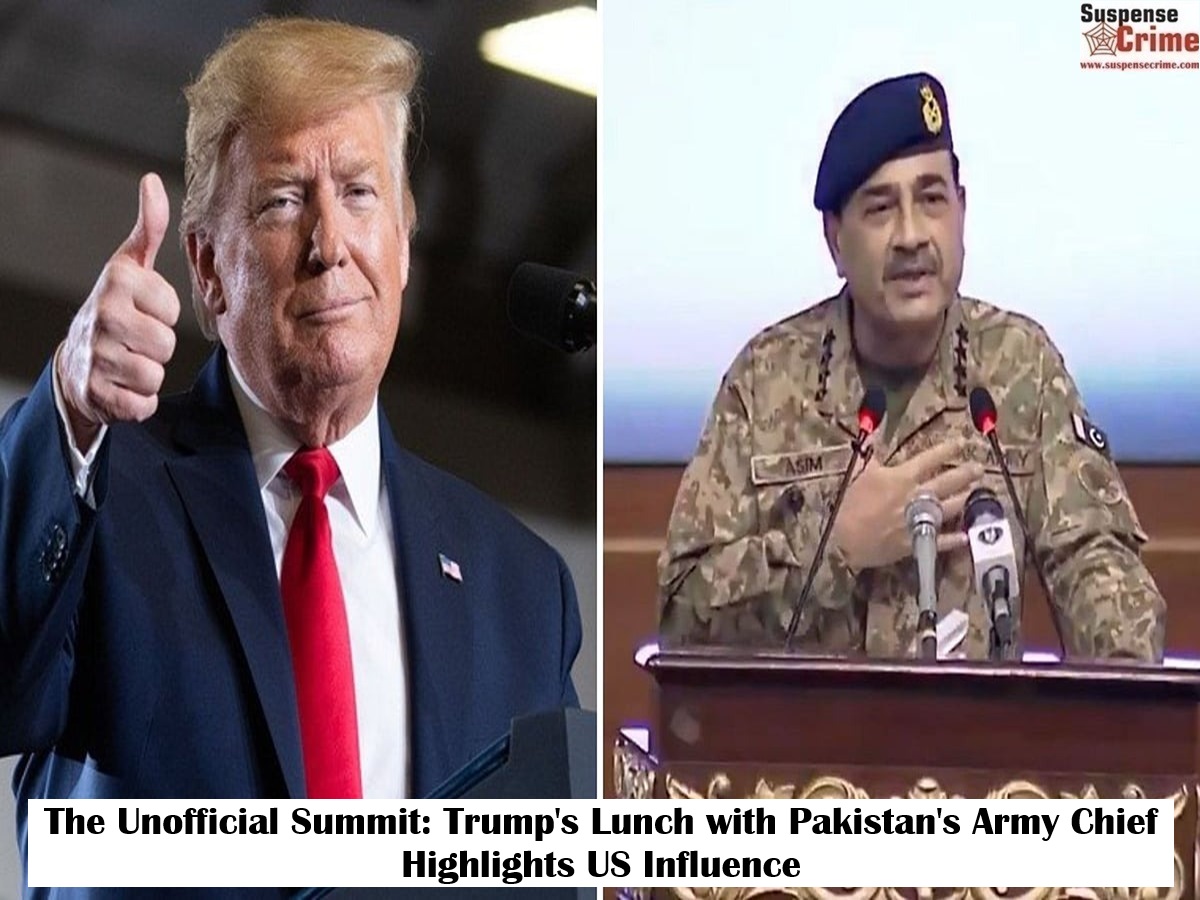
Suspense crime, Digital Desk : A seemingly informal lunch between Pakistan's powerful Army Chief, General Asim Munir, and former U.S. President Donald Trump has sparked significant debate and revealed much about the complex dynamics of international influence, particularly when it comes to Pakistan's strategic alignment. The meeting, which took place outside the formal channels of the current U.S. administration, served as a powerful signal, not just to Washington but, perhaps more critically, to the people of Pakistan themselves: a stark reminder of where real power and leverage might still reside.
The encounter, reportedly a private lunch at Trump's Mar-a-Lago estate, was highly unusual. It occurred not during Trump's presidency, but at a time when he was out of office yet actively campaigning to return to the White House. For Pakistan's top military leader to engage so directly with a potential future U.S. President underscores a calculated diplomatic strategy – a form of hedging bets in a volatile political landscape.
The core argument emerging from this meeting is that it implicitly highlighted the enduring sway of a figure like Donald Trump, even when out of formal power. For many observers, it demonstrated Pakistan's military leadership's willingness to cultivate relationships with influential American figures, irrespective of who occupies the White House. This approach, while pragmatic, can also be seen as a sign of Pakistan's perceived need to seek external validation and support, especially from Washington, to navigate its internal challenges.
Moreover, the optics of Pakistan's Army Chief seeking an audience with a former U.S. President, while the Biden administration was in office, conveyed a layered message. It suggested a recognition within Islamabad of Trump's significant potential for a political comeback and a desire to lay groundwork for future relations. For the Pakistani public, it might have reinforced the idea that ultimate decisions and support for their nation often emanate from powerful foreign capitals, rather than solely from their own elected leadership. It was, for some, a visible demonstration of "who's the real boss" in the larger geopolitical chessboard impacting Pakistan.
This informal summit, therefore, was far more than a mere social gathering. It was a carefully orchestrated move designed to send signals across various fronts: to the current U.S. administration, to a potential future one, and crucially, to the domestic audience within Pakistan, about the enduring reliance on external alliances for stability and strategic maneuvering. It encapsulates the intricate and often unofficial pathways through which international influence continues to operate, shaping destinies far beyond the formal diplomatic corridors.
Read More: Russia will have to pay a heavy price for the Ukraine war, experts warn; the burden is increasing.

 Share
Share



